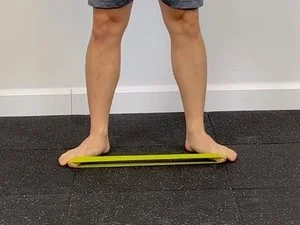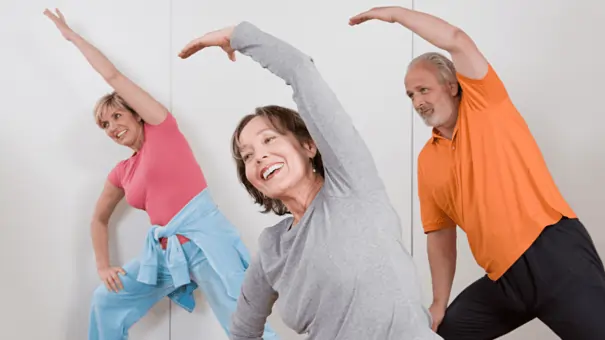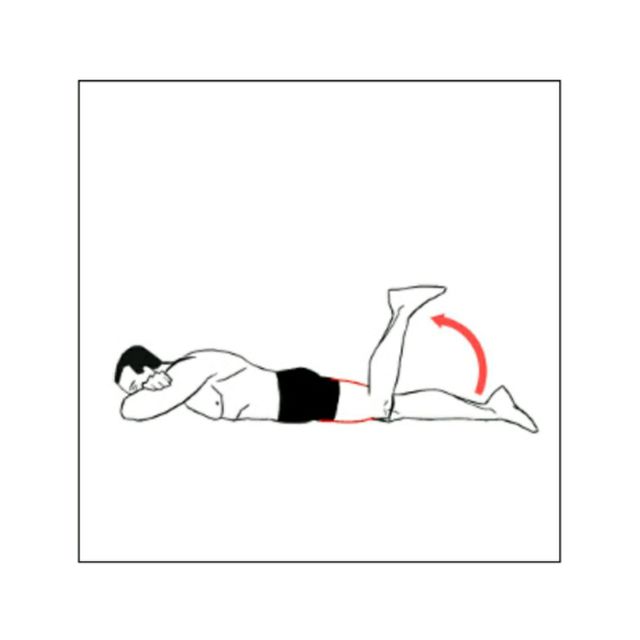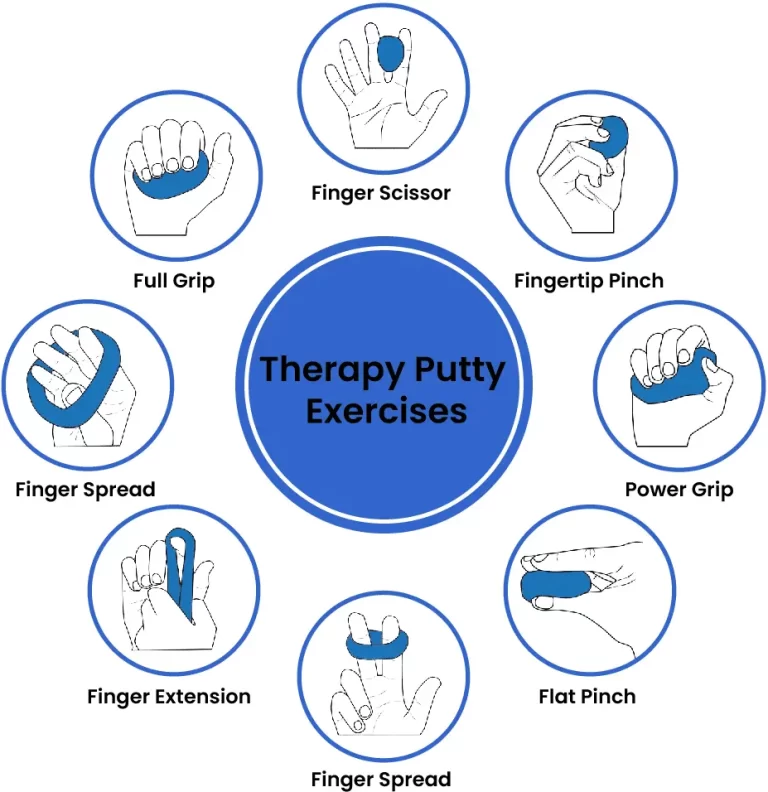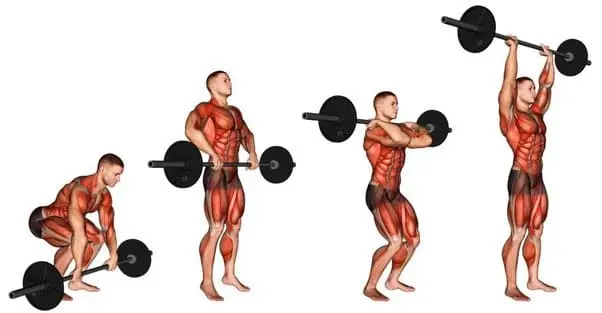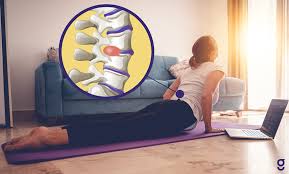19 Best Exercises for Bunions of Foot
Exercises for bunions are an essential part of your overall treatment plan, including physical therapy and medicines.
Introduction:
The bunion looks like a bump on the side of the big toe. Your big toe moves towards your second toe due to the irregularity of the foot bones that generated this bump. This angle is what caused the lump on your toe. The bump might not hurt every time. But gradually, a bunion will push the toes closer together. Suffering and maybe unrecoverable deformities could result from this.
Bunions can be extremely painful. They not only cause you significant pain, but they also restrict daily activities and interfere with what you like to do. Thankfully, you can improve your symptoms and prevent bunions from developing by making certain lifestyle adjustments and engaging in certain exercises. Toe stretches and foot exercises help strengthen the muscles that regulate your big toe and maintain flexibility in the joint between it and the rest of your foot, which is beneficial if you have bunions.
After bunion surgery, it is recommended to perform foot exercises after the healing process is finished to prevent any further development of the bunion or pain.
Causes:
Most people believe that bunions are inherited. Inherited abnormal foot structure is the cause of them. Bunions can happen as a result of several conditions, including flat feet, abnormal bone structure, and excessively flexible ligaments. Some experts believe that wearing shoes that don’t fit well causes bunions, while wearing shoes that fit wrong aggravates structural problems that already exist.
Bunions typically worsen with time. They may become worse due to;
- Shoes that are too tiny or too tight, put pressure on your big toe as your toes squeeze together
- High heels or pointed toes: These kinds of shoes press your toes together.
- Standing for extended periods
- Sign of arthritis in your feet
Signs and symptoms:
In addition to the bulge, a bunion can have the following symptoms:
- The skin on the side of your big toe is red and inflamed.
- The big toe pointing in the direction of the other toes
- Your big toe has thick skin on the bottom.
- The second toe has calluses.
- Intermittent or chronic foot pain
- Trouble moving the big toe.
A bunion may cause pain that makes walking challenging. Speak with your physician if you have any of the following symptoms:
- Continuous pain in the feet
- Being unable to find shoes that fit you properly
- Reduced big toe flexibility
- A huge lump on or close to the big toe joint
Advantages of exercise:
These are a few advantages of regular physical activity;
- Improve your posture or balance.
- Relaxing muscles.
- Reduce pain to the lowest possible level.
- Develop more flexibility.
- It helps in strengthening weaker muscles.
- Release any tightness.
- You can regain your range of motion by exercising.
- Improving coordination.
Take the following measures before you start an exercise program:
Before beginning any exercise program, it’s important to consider a few safety measures and maximize the benefits. Consult a physical therapist or doctor for advice on the exercises that are best for your specific problem.
It’s necessary to listen to your body and avoid pushing past difficulties. While some soreness is normal following exercise, persistent or severe pain could be a sign that you’re pushing yourself too hard. Low-impact workouts are your best option, and as soon as you are able, you should progressively advance to more challenging ones.
To prevent further injuries, it is essential to maintain proper form and technique. If you are unclear about how to properly perform your exercise treatment, consult a physical therapist. Before starting any exercise, warm up your joints and muscles to better prepare them for the workout.
Exercises for Bunions of Foot:
By strengthening your foot with the following exercises, you can reduce the problems connected with a bunion.
Heel raise
- Start with a relaxing standing position on the ground.
- If support needs to take a chair.
- Place the majority of your weight on the outside of your feet and elevate your heel.
- Hold this position for five seconds.
- Then return to your neutral position.
- Then relax.
- Repeat this exercise five to ten times.
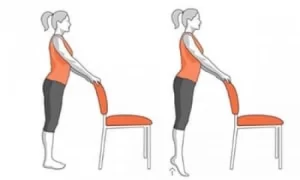
Banded toe raise
- Start by settling into a chair or table for a comfy seat.
- Make a loop with a bit of elastic exercise band and put it on your feet.
- With your heel firmly placed on the ground, turn your toes outward.
- Keep your posture the same for a little while.
- Then return to your neutral position.
- Then relax.
- Repeat this exercise five to ten times.

Towel curl
- Put your feet firmly down on the floor and take a seat on the chair.
- Point your toes forward and keep your body in a straight posture with your legs and feet.
- Lift your foot, flex it backward, and place your heel down.
- Put a towel in front of you.
- On the ends of the towels, your heel should be straight. To the extent that it is possible, extend your toes with your middle foot and both sides to make contact with the towel.
- Getting through your toes, pull the towel in your direction.
- Attempt to put an extensive circle under the arch. Every time you straighten your foot and pull back, a small amount of towel will migrate.
- Then return to your neutral position.
- Then relax.
- Repeat this exercise five to ten times.
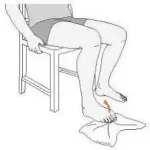
Toe points and curls
- With your feet flat on the ground, take a straight seat in a chair.
- Raise the heels while keeping the toes on the ground.
- When your feet are just slightly off the ground, stop.
- Hold the heels in place for five seconds before releasing them.
- Just the tips of the big and second toes should come into touch with the ground during the second stage.
- To do this, flex your toes and raise your heels.
- Hold for five seconds before lowering.
- To make sure that just the tips of your toes are in contact with the ground during the third stage, raise your heels and pull them in.
- Keep this position for five seconds.
- Then return to your neutral position.
- Then relax.
- Repeat this exercise five to ten times.
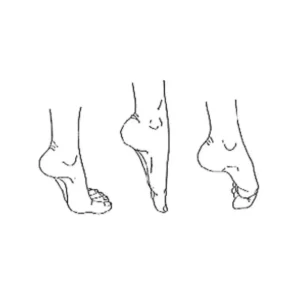
Toe pull
- Started with taking a seat on a chair or bed.
- A leg should be extended in front of you.
- Resistance bands are useful for strengthening.
- Pull your toes up to your waist as much as possible.
- Hold the posture for a few seconds.
- Then return to your neutral position.
- Then relax.
- Repeat this exercise five to ten times.
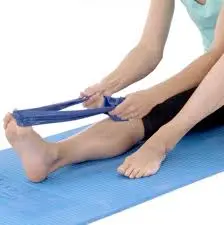
Toe splay
- With your back straight and your feet firmly planted on the floor, take a seat in a chair.
- As much as possible, stretch your toes apart without getting exhausted.
- Hold this position for a few seconds.
- After that, return to your neutral position.
- Next, relax.
- Repeat this exercise five to ten times.
- With the other foot, repeat the exercise.
- You can try wrapping a rubber band around your toes once you’re strong enough.
- Increasing the resistance will make the exercise harder.
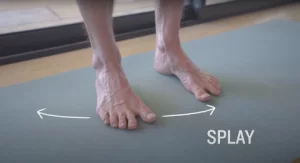
Achille stretch
- Place your arms at your sides and face the wall as you stand.
- To prevent your foot from becoming flat and to keep your heels straight.
- Make sure both of your feet are exactly in line with the wall.
- The back of the knee should remain straight while flexing the upper knee.
- Ensure that the back heel remains in contact with the floor.
- The calf muscles in the back legs should feel stretched.
- Hold the posture for a few seconds.
- The calf muscles of the back leg should feel tight.
- Though the stretch should feel good, if it hurts during the activity, it won’t be beneficial.
- Try not to stretch the back leg too far if it hurts.
- Then return to your neutral position.
- Then relax.
- Repeat this exercise five to ten times.
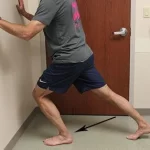
Big Toe Stretch
- Take a seat upright in a chair with your feet flat on the floor.
- Position the left foot on the right leg.
- The big toe can be softly extended up, down, and to the side using your fingers.
- For a few seconds, hold each position with the big toe.
- Then return to your neutral posture.
- Then relax.
- Repeat this exercise five to ten times.
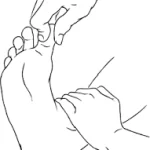
Single Leg Balance
- To begin, stand on one leg.
- Make use of a chair or wall support to raise yourself onto your toes.
- Hold this position for a few seconds.
- Lower carefully your leg.
- Then return to your neutral posture.
- Then relax.
- Repeat this exercise five to ten times.
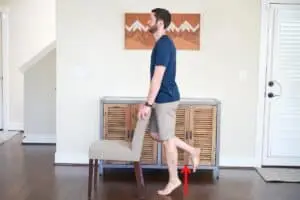
Plantar fascia stretch
- Place your right ankle exactly over your left leg’s knee while seated on a chair.
- Gently bring your toes back into the front of your ankle with your right hand.
- Hold this pose for a few seconds.
- Then return to your neutral posture.
- Then relax.
- Repeat this exercise five to ten times.
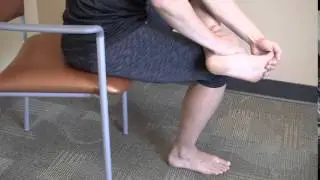
Toe salutes
- With your feet flat on the floor, take a seat in a chair.
- Maintaining your other four toes firmly planted, raise your big toe.
- Keep this position for a short while.
- Next, keeping your big toe firmly planted on the ground, raise all four of your toes at once.
- Hold this pose for a few seconds.
- Then return to your neutral posture.
- Then relax.
- Repeat this exercise five to ten times.
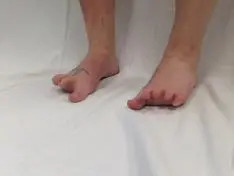
Marble pickup
- You will need ten to twenty marbles and a bowl for this exercise.
- Arrange the bowl close by and the marbles on the ground.
- With your feet positioned closest to the floor, take a seat.
- Each stone should be picked up with your toes and placed in a basin.
- Make sure your big toe is securely around the marble.
- Then return to your neutral posture.
- Then relax.
- Repeat this exercise five to ten times.
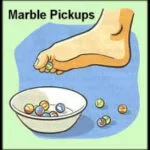
Ball role
- Take a step onto a tennis or golf lacrosse ball that is lying flat on the ground.
- Step on the ball, moving it back and forth.
- Do this with each foot for three to five minutes.
- Then return to your neutral posture.
- Then relax.
- Repeat this exercise five to ten times.
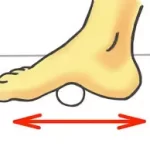
Ankle pumps
- This results in movement of your toe joints, which lessens stiffness.
- Sit on the floor or in bed.
- Start with the foot and rotate in clockwise circles 20 times.
- Then, after completing it, make 20 additional circles oppositely.
- Then return to your neutral posture.
- Then relax.
- Repeat this exercise five to ten times.
- Do the same with the other foot.
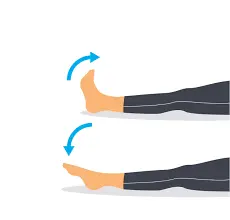
Towel stretch
- First, choose a spot on the ground where you can sit comfortably.
- Place a towel on the ground in front of the body.
- Now cover your one-leg heel with a towel.
- Attempt to pull the towel in your direction by grabbing it between your toes.
- Hold this position for a few seconds.
- Then return to your neutral posture.
- Then relax.
- Repeat this exercise five to ten times.
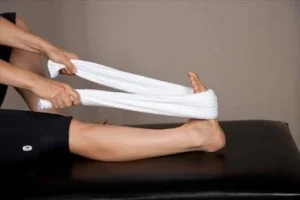
Sand walking
- Visit a beach, a desert, a volleyball court, or any other location containing sand.
- Remove your shoes and socks.
- Walk as much as you can.
- Try extending the distance gradually to avoid overtaxing your calves and feet muscles.
- Next, relax.
- At least ten to twenty-minute walks.
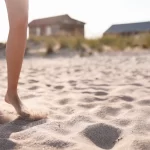
Seated toe taps
- In the beginning, settle into the chair.
- Keep your foot flat on the ground.
- If you can, raise your foot off the ground.
- Move your toes in close to you.
- Point your toes toward the floor and pull them under now.
- Then return to your neutral posture.
- Then relax.
- Repeat this exercise five to ten times.
Toe to wall stretch
- Faced against the wall, begin by taking it gently.
- You could try pressing your toes into the wall and pushing it away.
- Your calves should feel like they are contracting.
- Hold this position for a few seconds.
- Then return to your neutral posture.
- Then relax.
- Repeat this exercise five to ten times.
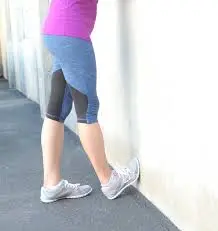
Calf Stretch Off A Step
- Standing with your knee straight on the edge of a step or stairs.
- Lower your heel gradually until you feel a stretch in the back of your lower foot.
- Hold this position for a short while.
- Then return to your neutral posture.
- Then relax.
- Repeat this exercise five to ten times.

Which safety precautions are required when working out?
- Take a break in between exercises.
- Extend and bend slightly.
- If you become more uncomfortable, stop immediately.
- Straighten your back while you exercise.
When is it advisable to not perform the exercise?
- My muscles get severely burned.
- Pain or edema in the joints.
- You spread easily.
- If numbness or pain are present.
- Headache and Fever
- If exercising hurts, stop.
To keep the feet strong and healthy:
- Perform a thorough warm-up before working out.
- Wear supportive footwear when engaging in daily activities and sports.
- Replace damaged shoes as soon as possible.
- Increase your strength and flexibility gradually to condition the ankles and feet.
- Avoid uneven surfaces, especially when running.
- Refrain from jogging too much uphill.
- Don’t engage in too many activities.
- To prevent an injury from occurring again, take enough rest and proper care.
Further Advice on Reducing Bunion Pain:
Exercise should be the primary component of your rehabilitation program, but some suggestions also help with bunions;
- Switch up your footwear
Although there isn’t a single shoe that fits everyone perfectly, if you have bunions, try to find shoes with a wide toe box and low heels. Although they might look fantastic on your feet, narrow, pointed shoes can exacerbate bunions by squeezing them.
- Add cushions
You can cushion the sore area over the bunion by inserting silicone over-the-counter pads inside your shoe. Simply try them on for just a moment to ensure that you are wearing the correct size. Overly large pads have the potential to worsen the bump by applying more pressure.
- Think about orthotics for feet
Try an orthotic, or over-the-counter shoe insert, particularly if you have flat feet or another structural foot problem. orthotics were effective in treating bunion pain, particularly when combined with toe spacers (which are worn in between the toes).
- Use night splints to sleep
These straighten your big toe, which may help with pain relief.
When to see a doctor:
- It could be time to visit a doctor if at-home treatments aren’t providing any relief.
- They can help you determine whether surgery is necessary, particularly in cases where nonsurgical therapies are not effective.
- To limit the possibility of returning and allow you to resume your favorite activities, surgical procedures also try to restore the normal functioning of the toe.
- To restore the toe to its natural position, surgeons can perform many surgical procedures. Usually, they base their choice on how severe the bunion is.
- Typically, signs of pain and bony prominence point to the need for surgery.
- You should always visit a doctor because choosing the right technique depends on many things.
Outlook and prevention:
For bunions, there are numerous nonsurgical and surgical options. If putting on shoes or walking is difficult due to a bunion, see your doctor. One good strategy to prevent bunions from growing is to wear shoes that fit properly. A shoe that fits well ought to fit your foot’s shape and leave plenty of space between your toes.
Summary:
A bunion is a bony growth located at the big toe’s base. Although tight shoes are typically the cause, genetics can also contribute to the development of a bunion.
Bunions cannot be naturally removed by any miracle activity. For the sake of maintaining healthy feet and the capacity to walk, bunions require exercise and self-care. Stretching the region surrounding the affected joint, strengthening the foot, and improving balance and mobility are all part of bunion exercises.
A physical therapist can provide you with bunion exercises and help you select suitable shoes. A podiatrist is a medical specialist that some people may need to see for an evaluation of their bunion and possible surgery.
FAQ:
Does exercise help treat bunions?
For example, physical therapy exercises can help to slow down the progression of your bunion. Always start with a simple treatment plan.
To what extent should you exercise to treat bunions?
The recommended amount of time to perform these barefoot workouts is 15 to 20 minutes every day. Even while it could seem like a lot, you’ll probably discover that the enjoyment these motions provide is well worth the small amount of work they require.
How can I take care of my bunions naturally?
While the bunion is covered with a thin cloth, apply ice to it.
Give your entire foot a relaxing massage.
Bunions can be managed by widening shoes.
A healthy weight should be maintained.
Elevate your foot whenever possible.
What makes bunions worse?
Standing all day. One certain method to make your bunion worse is to spend all day standing on your feet. The worst thing you can do for your bunion is walk or run a marathon; if your line of work demands you to be on your toes all the time, you might need to take some time off.
Which preventive method works best for bunions?
Avoid wearing shoes that are too tight and choose shoes that suit your foot to reduce bunions and their effects. Avoid wearing shoes with sharp edges and go for shoes with soft soles and wide insteps.
Does physical therapy help with bunions?
Bunions frequently produce abnormalities that increase with time, resulting in pain on the side of the bump and difficulty moving. Physical therapy may help with improving function and lowering bunions-related pain.
What is the best way to treat a bunion on your foot?
If you have self-care, start there. Put on wider shoes, wrap your bunion with gel padding, and use arch support inserts. If your bunion starts to hurt or irritate, ice it multiple times a day to reduce swelling. Should the pain increase or your gait become unsteady, see a podiatrist.
Which activities will prevent foot bunions?
You can also do a variety of foot workouts that strengthen the foot and reduce the chance of bunions and foot pain. Heel lifts, toe raises, toe curls, toe extensions, arch tilts, and ankle eversions and inversions are some of these exercises.
Is it safe to walk with a bunion?
There are two possible answers. Walking barefoot can occasionally be beneficial for managing bunions. For instance, you should always aim to wear shoes that fit well and don’t rub against your bunion when you’re moving around if it’s extremely painful or tender.
Is it possible to correct my bunion without surgery?
To prevent the big and second toes from rubbing and crowding one another, bunion toe spacers are placed in between them. Separators can be used with shoes and are also useful for straightening the big toe. Bunion splints resemble bands that wrap around your foot and big toe.
What causes bunions in individuals?
Bunions are typically caused by the big toe compressing and pushing toward the second toe as a result of the continuous tension on the foot. Pain may eventually develop where the base of the big toe joins the foot due to the growth of additional bone.
When do bunions start to form?
Under pressure from the big toe, the second toe may misalign and occasionally overlap with the next toe. Bunions are more frequent in adult women, however, they can also affect young persons between the ages of 10 and 15. Teenage females are three times as likely as boys to get bunions.
Living with bunions: Is it ok?
Bunions may not limit your activity level and can stay stable if you wear the right shoes. Pain is the main sign that a bunion needs surgical intervention. A surgical bunion repair may be an option for you if your pain prevents you from wearing most shoes and from doing most activities.
Can bunions be removed by exercise?
However, by performing a few easy exercises, you may help restore the structure of your entire foot in addition to relieving the pain caused by bunions. By completing these exercises, you can strengthen your feet, correct the deformity, and lower your risk of bunions in the future.
Why do individuals have bunions removed?
If your severe foot pain persists even when you walk or wear comfortable, flat shoes, you may require surgery to correct your bunion.
Do stretches work for bunions?
By strengthening the muscles in the toes and feet and easing the strain on the metatarsophalangeal (MTP) joint, activities for bunions and pain can help prevent or delay the development or growth of bunions. For mild to moderate bunions, bunion self-care, and stretches can be used to relieve symptoms.
Are feet with bunions unhealthy?
Arthritis, which destroys the joint’s cartilage, is also linked to bunions. Conservative measures that improve foot mechanics and relieve pressure off the cartilage in the MTP joint may help relieve pain and stop bunions from getting worse.
Should you give your bunions a massage?
Although it’s not a cure, therapeutic massage can help reduce swelling, ease bunions’ pain, and improve joint mobility. Massage therapy can help prevent or postpone surgery while also slowing the bunion’s progression.
References:
- On December 13, 2023, Bariya, D. 22 Best Exercises for Bunions of Foot – Mobile Physio. Mobile Clinic for Physiotherapy. Here are the top 22 exercises for bunions of the foot: https://mobilephysiotherapyclinic.in/
- B. Axtell (2018) 27 February. Try These 9 Foot Exercises at Home. Foot exercises are a type of fitness activity that can be found on Healthline.
- On October 6, 2023, Pugle, M. Seven Pain Relief Exercises for Bunions. Verywell Medical Center. Exercises-for-bunions-7571141 – https://www.verywellhealth.com
- Image 2, February 8, 2023: Smolny, E. Strengthening the Feet: A Bunion Rehab Exercise – Ask Dr. Abelson. Pinterest. PIN: 361836151325139134; available at https://in.pinterest.com
- Image 5, Exercises for physiotherapy. (No date). Toe flexion and extension exercises can be found at https://www.physitrack.com/exercise-library/
- Image 6, How to Extend Your Achilles Tendon. (No date). Jaguar Orthopaedic Institute. The article “How to Stretch Your Achilles Tendon” is currently trending on JoiOnline.net.
- Image 7, Big Toe, Erect. (undated). The following URL can be accessed: https://iris.hattiesburgclinic.com/patadv/exkit/Complete%20Stretching/English/0241000051chf004m French.html
- Image 8, T. P. D. Ocs, 2024 (January 14). Foot exercises for correcting bunions. Tim’s Physical Therapy Time. Foot exercises for bunions: https://pttimewithtim.com/
- Image 9, On May 28, 2015, O. N. Flex your plantar fascia when seated. YouTube. YouTube: https://www.youtube.com/watch?v=l5zCe0AdQks
- Image 10, On December 13, 2023, Bariya, D. A mobile physiotherapy clinic offers the 24 Best Exercises for Subtalar Osteoarthritis. Here are the top 24 exercises for subtalar osteoarthritis: https://mobilephysiotherapyclinic.in/
- Image 17, L. May 22, 2023. easy foot and leg workouts. Legs Important. Easy workouts for your feet and legs: https://legsmatter.org/whats-new/
- Image 18, Insecure, L. June 15, 2018. Best Exercises for Stretching Calfs. Pop Sugar. Best calf stretches (310-2547) can be found at https://www.popsugar.com/fitness
- Image 19, August 3, 2023; D. Patel The Most Effective Morton’s Neuroma Exercise – Samarpan Physio. Samarpan Physiotherapy Clinic. Newton’s neuroma exercises at Saramarpan Physio Clinic

